The Digital Transformation Lie (And What Actually Works)
Tired of digital transformation snake oil? This no-nonsense guide reveals what really drives successful business evolution.

You've heard it a thousand times. "Digital transformation is critical." But what does that even mean anymore? The term has been passed around corporate boardrooms like a lukewarm appetizer. Everyone takes a bite. Few find satisfaction.
I've spent the last decade watching businesses throw millions at digital transformation initiatives. Many fail. The successful ones aren't following the playbook you might expect. They're writing their own.
As the founder of 1985, an outsourced software development company, I've had a front-row seat to digital transformation successes and train wrecks alike. The landscape has changed dramatically. The consultants who succeed today look nothing like those who dominated five years ago.

The Transformation Delusion
Most companies think they want digital transformation. What they actually want are business outcomes.
Nobody cares about having a fancy cloud infrastructure. They care about reducing operational costs by 30%. Nobody wants a new CRM system. They want sales cycles cut in half. Nobody wants a mobile app. They want deeper customer engagement and loyalty.
When I walk into a room with a new client, the conversation typically starts with technology. "We need to move to the cloud." "We need AI." "Our competitors have a slick mobile experience." These statements reveal symptoms, not the disease.
The first rule of effective digital transformation consulting: diagnose before you prescribe.
A manufacturing client once asked us to build a new inventory management system. Their existing one was "outdated." After spending two weeks on the factory floor, we discovered the real issue. Their supply chain communication was broken. Truck drivers couldn't notify the warehouse when they were running late. This caused ripple effects throughout production scheduling. The solution wasn't a new inventory system. It was a simple real-time communication tool between logistics and the warehouse.
The project cost 70% less than their original estimate and delivered 3x the business impact.

The Consultant Identity Crisis
The digital transformation consulting world suffers from an identity crisis. You'll find four distinct archetypes:
- Strategy Powerhouses: Think McKinsey, BCG, Deloitte. They excel at PowerPoint and executive workshops. They're brilliant at diagnosing problems but rarely stick around for implementation.
- Technology Implementers: The Accentures, IBMs, and regional system integrators. They're excellent at installing software but often miss the deeper business model innovations.
- Creative Agencies: The digital agencies that sprang from marketing roots. Strong on customer experience but weaker on operational transformation.
- Boutique Specialists: Focused consultancies dedicated to specific technologies (AI, blockchain) or industries (healthcare tech, fintech).
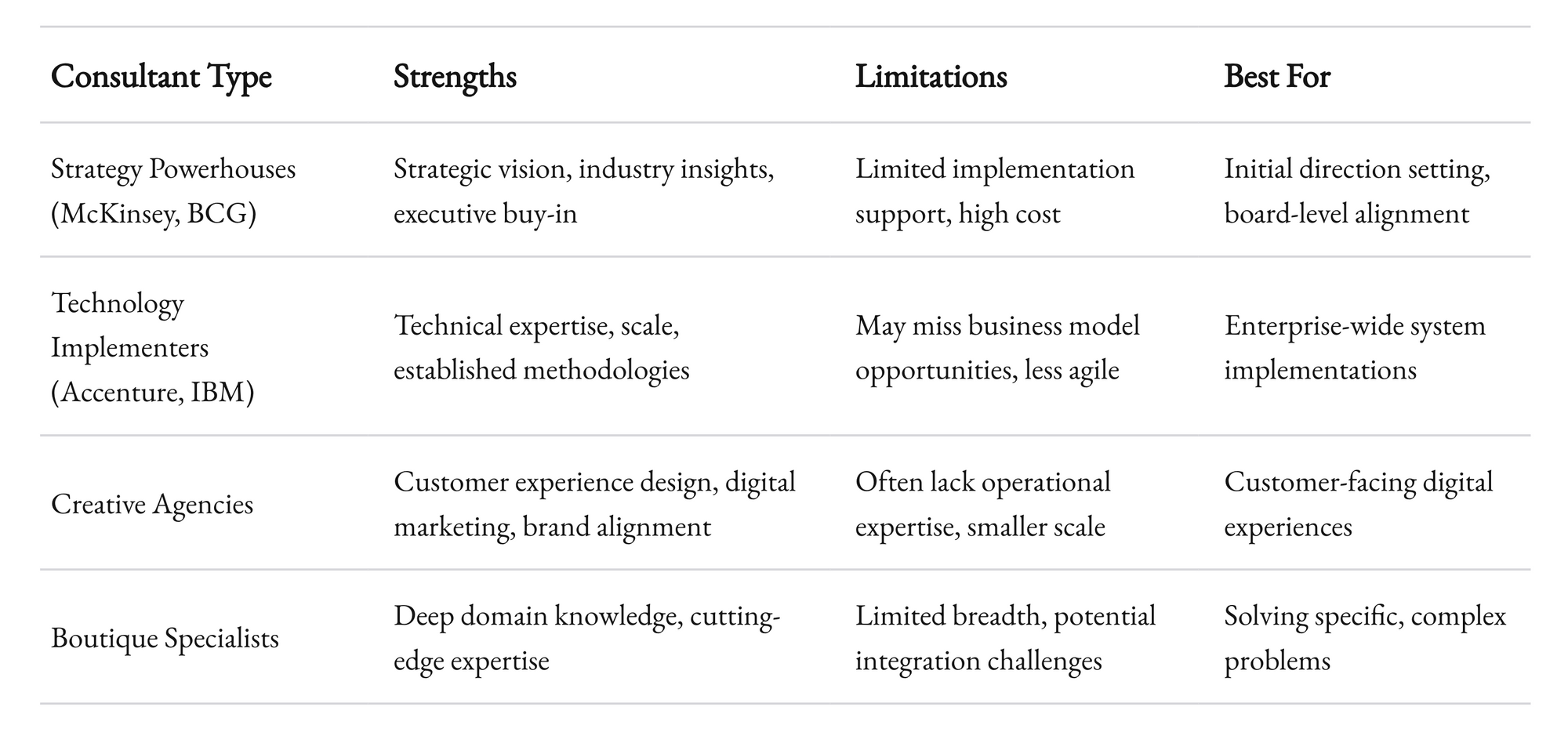
Each claims to deliver transformation. In reality, most deliver only their slice of the pie.
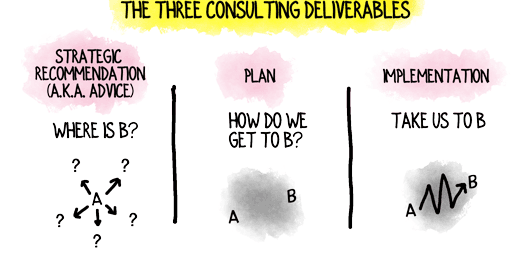
The most effective consultants I've seen cross these boundaries effortlessly. They understand strategy but get their hands dirty with implementation. They can design customer experiences but also re-engineer supply chains.
In other words, they act more like entrepreneurs than traditional consultants.
The Skills Gap That's Eating Transformation Budgets
When I interview potential consultants for 1985, I look for a rare combination of skills. The traditional "T-shaped" professional model (deep in one area, broad in many) is outdated for digital transformation consulting.
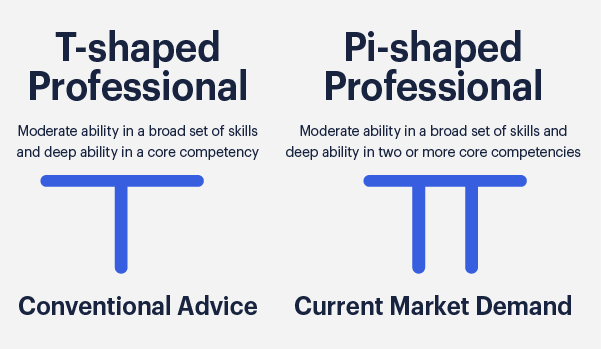
Today, I look for what I call "pi-shaped" professionals (π). They have deep expertise in two distinct areas, with a connecting awareness across multiple domains.
For example, a consultant might be deeply versed in human-centered design and data science, with connecting knowledge across organizational change, technology implementation, and industry specifics.
These combinations create powerful perspectives. A product manager who also understands data engineering makes different recommendations than one who doesn't. A UX designer with supply chain expertise sees different opportunities for intervention.

The growing skills gap explains why so many transformation initiatives fail to deliver. Most consulting teams are assembled by role, not by skill combination. The design team designs. The data team analyzes. The engineering team builds. But the magic happens at the intersections.
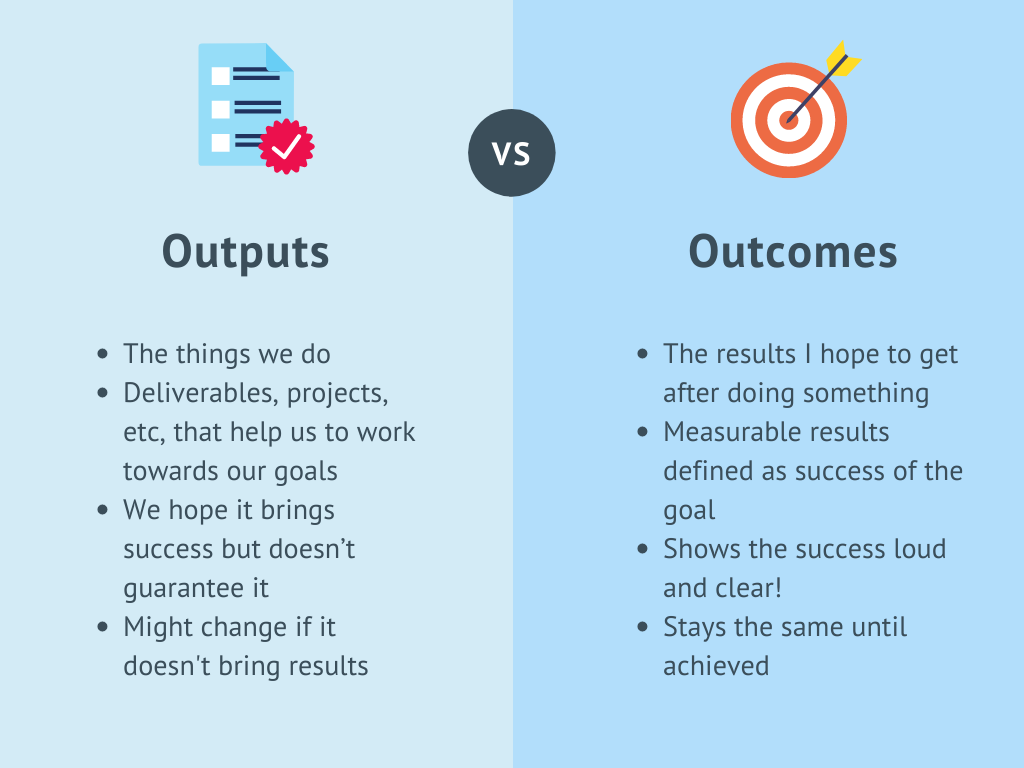
The Metrics Mirage
Digital transformation should be measured in business outcomes, not digital outputs.
Yet I constantly see transformation measured by digital outputs:
- Number of applications moved to the cloud
- Percentage of processes automated
- Website traffic increases
- User account creation
These metrics create the illusion of progress without guaranteeing business impact.
A regional bank spent $50 million on digital transformation, primarily on a new mobile banking platform. When we met them, they proudly shared that mobile adoption had increased 300%. But when we dug deeper, an uncomfortable truth emerged. Their cost-per-customer had actually increased, not decreased. Customer satisfaction had barely budged. The much-touted digital transformation hadn't transformed the business in any meaningful way.
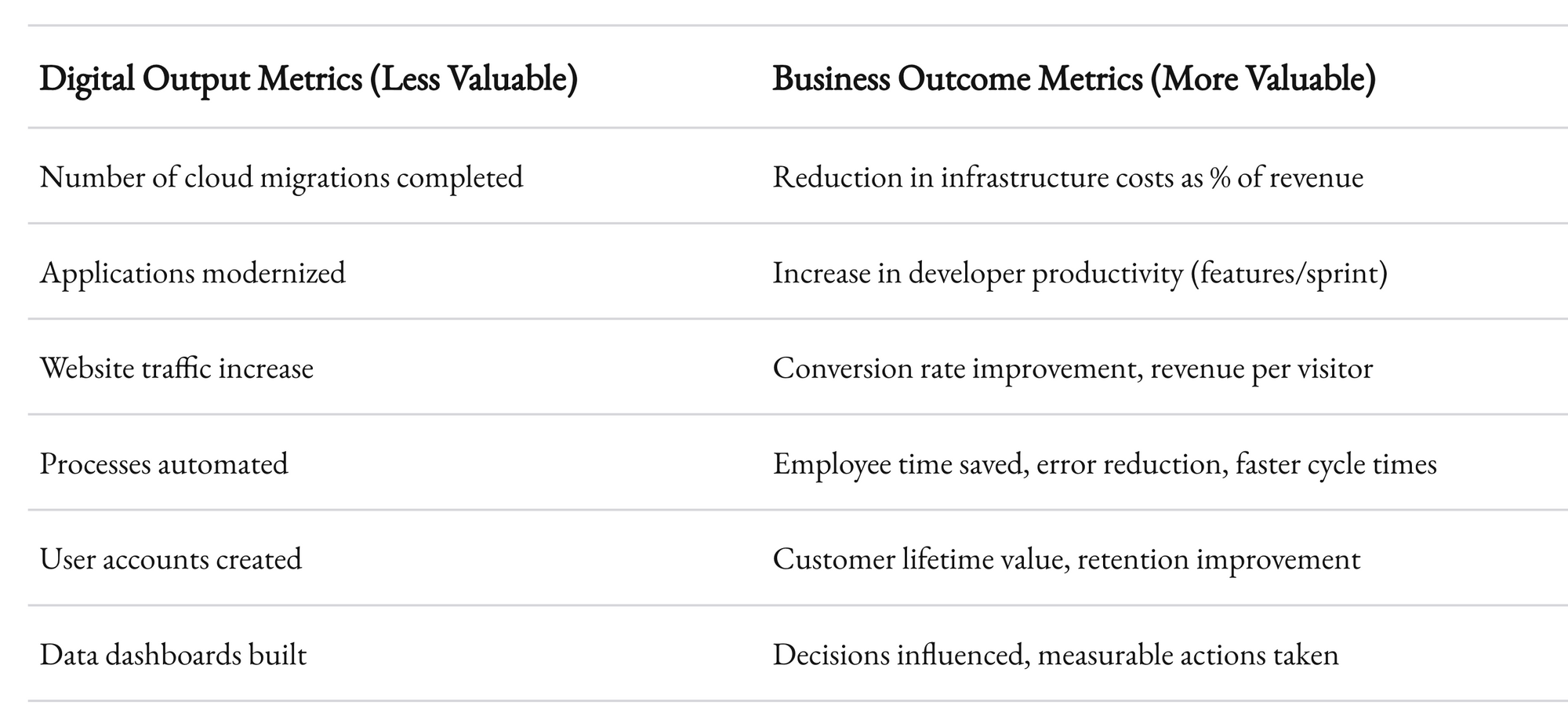
Effective consultants establish clear business outcome metrics at the outset:
- Reduced customer acquisition cost
- Increased customer lifetime value
- Faster order-to-delivery time
- Lower operational expenses as a percentage of revenue
- Higher employee productivity and satisfaction
Without these anchors, transformation initiatives drift into the dangerous waters of "digital for digital's sake."

The Implementation Gap
Strategy without implementation is just an expensive document.
Large consulting firms excel at producing comprehensive digital transformation strategies. They conduct executive workshops, analyze competitive landscapes, and build detailed technology roadmaps. Then they hand over these documents to clients and move on.
That's where things typically go sideways.
A study by McKinsey found that 70% of digital transformations fail. In my experience, this failure primarily occurs in the implementation phase, not the strategy phase.
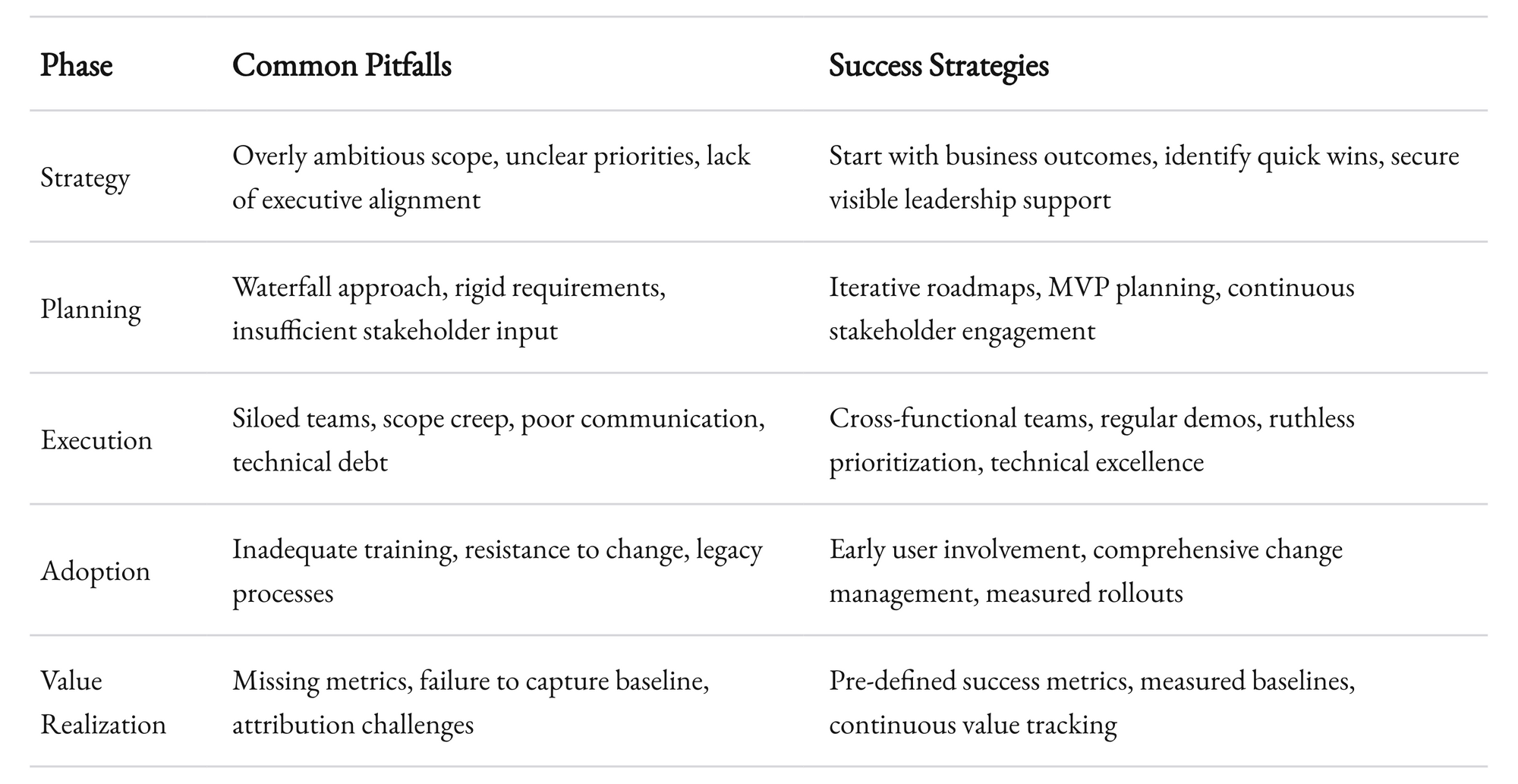
Why? Because implementation requires different skills than strategy development:
Strategy skills: Analysis, framework application, stakeholder alignment, future-state visioning
Implementation skills: Change management, technical project management, stakeholder communication, risk mitigation, technical troubleshooting
Few consultants excel at both. Even fewer consulting firms have figured out how to effectively bridge this gap.
At 1985, we follow a "strategy through delivery" model. The same team that develops the strategy stays embedded for implementation. We've found this approach dramatically increases success rates. It ensures the strategy is realistic and creates direct accountability for outcomes.

The Organization Design Oversight
Digital transformation is as much about organization design as it is about technology.
I once worked with a retail client implementing a new e-commerce platform. The technology selection was sound. The roadmap was realistic. But nine months in, the project was stalling. Despite having the right software, they couldn't get new features released.
The problem? Their organization structure fought against their technology choices.
The company had:
- Separate teams for in-store and online merchandising
- Different approval processes for digital vs. traditional marketing
- Distinct budgeting cycles for technology and business units
- Performance metrics that encouraged internal competition, not collaboration
We had to pause the technology implementation and redesign their operating model first. We created cross-functional product teams organized around customer journeys, not internal functions. We established shared OKRs between technology and business units. We redesigned approval processes to match the pace of digital development.
Only then could the technology deliver on its promise.
Effective transformation consultants spend as much time on organization design as they do on technology selection. The best ones know it's not an either/or choice. It's a carefully choreographed dance between technology and organization.
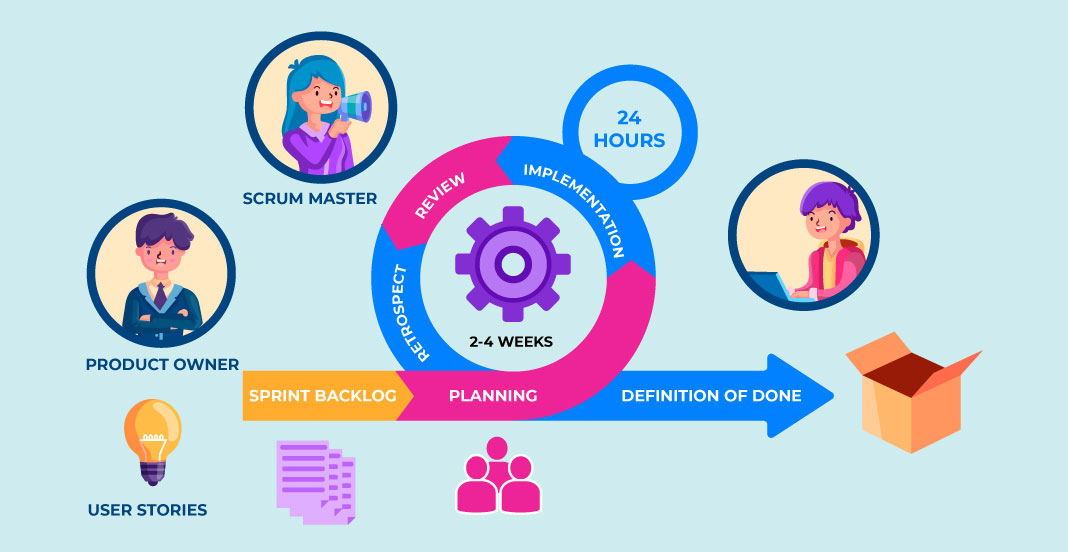
The Agile Paradox
Agile methodologies are central to most digital transformations. They promise faster delivery, greater flexibility, and better customer outcomes. When implemented well, they deliver on these promises.
But there's a paradox at the heart of many agile transformations.
Organizations adopt agile to become more responsive to change. Yet they implement agile using rigid, prescriptive approaches. They create detailed implementation plans with fixed timelines. They mandate specific practices across all teams regardless of context. They establish agile transformation "end states."
In other words, they try to implement adaptive approaches using non-adaptive methods.
The most successful transformations embrace agile principles from day one. They:
- Start small, with pilot teams tackling real business problems
- Measure outcomes, not methodology compliance
- Allow practices to evolve based on team context
- Focus on mindset shifts, not just process changes
- Use coaches as guides, not enforcers
A healthcare client wanted to adopt agile across their 2,000-person IT organization. Rather than creating a massive transformation plan, we started with three teams working on patient-facing applications. We measured their impact on patient satisfaction and operational efficiency. We learned what worked in their regulatory environment. Only then did we scale the approach, allowing teams to adapt practices to their specific contexts.
The result? A transformation that stuck because it evolved organically rather than being forced from above.

The Data Tragedy
Most organizations are drowning in data but starving for insights.
Digital transformation inevitably involves data—collecting more of it, analyzing it differently, and using it to drive decisions. Yet I've seen countless organizations invest millions in data lakes, analytics platforms, and dashboards without changing how they make decisions.
The data tragedy unfolds in three acts:
Act 1: Collection without purpose
Organizations build massive data repositories without clear use cases. They collect data because they can, not because they should.
Act 2: Analysis without insight
Teams produce beautiful visualizations and complex analyses that don't answer fundamental business questions or inspire action.
Act 3: Insights without action
Even when valuable insights emerge, organizational inertia prevents meaningful change. Data becomes a periodic curiosity, not a driver of decisions.
Effective digital transformation consultants break this cycle by:
- Starting with decision-making needs, not data availability
- Building minimum viable data products that drive specific actions
- Creating clear feedback loops between insights and business outcomes
- Embedding data literacy throughout the organization, not just in analyst teams
A financial services client had invested $30 million in a customer data platform. They could generate sophisticated segments and predictions. But when we interviewed front-line staff, we discovered they rarely used these insights. The data team operated in isolation from daily operations. We helped them integrate these insights directly into workflow tools, making the right action obvious rather than requiring extra effort.

The Human Element
At its core, digital transformation is about people changing how they work. Technology is just the enabler.
I've witnessed many technically sound transformations fail because they neglected the human element. The psychology of change is often the biggest barrier to success.
Effective transformation considers four human dimensions:
1. Capability
Do people have the skills to work in new ways? If not, how will you develop them?
2. Clarity
Do people understand why things are changing and what's expected of them?
3. Capacity
Do people have the time and mental space to learn new approaches while maintaining their current responsibilities?
4. Conviction
Do people believe the change is beneficial for them personally, not just for the organization?
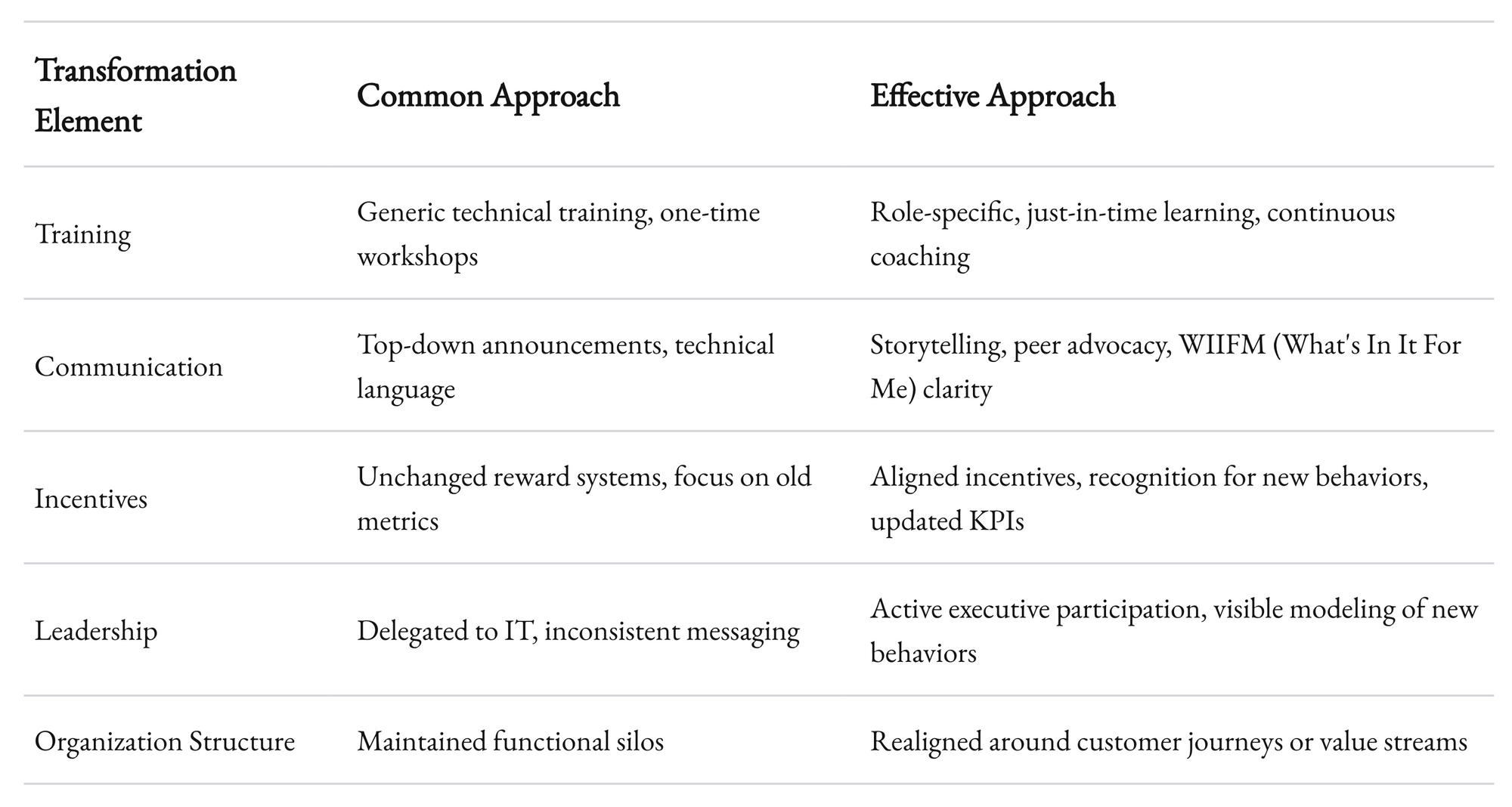
The most successful digital transformation consultants spend as much time on these dimensions as they do on technology selection and implementation. They recognize that transformation happens one person at a time, not just one system at a time.
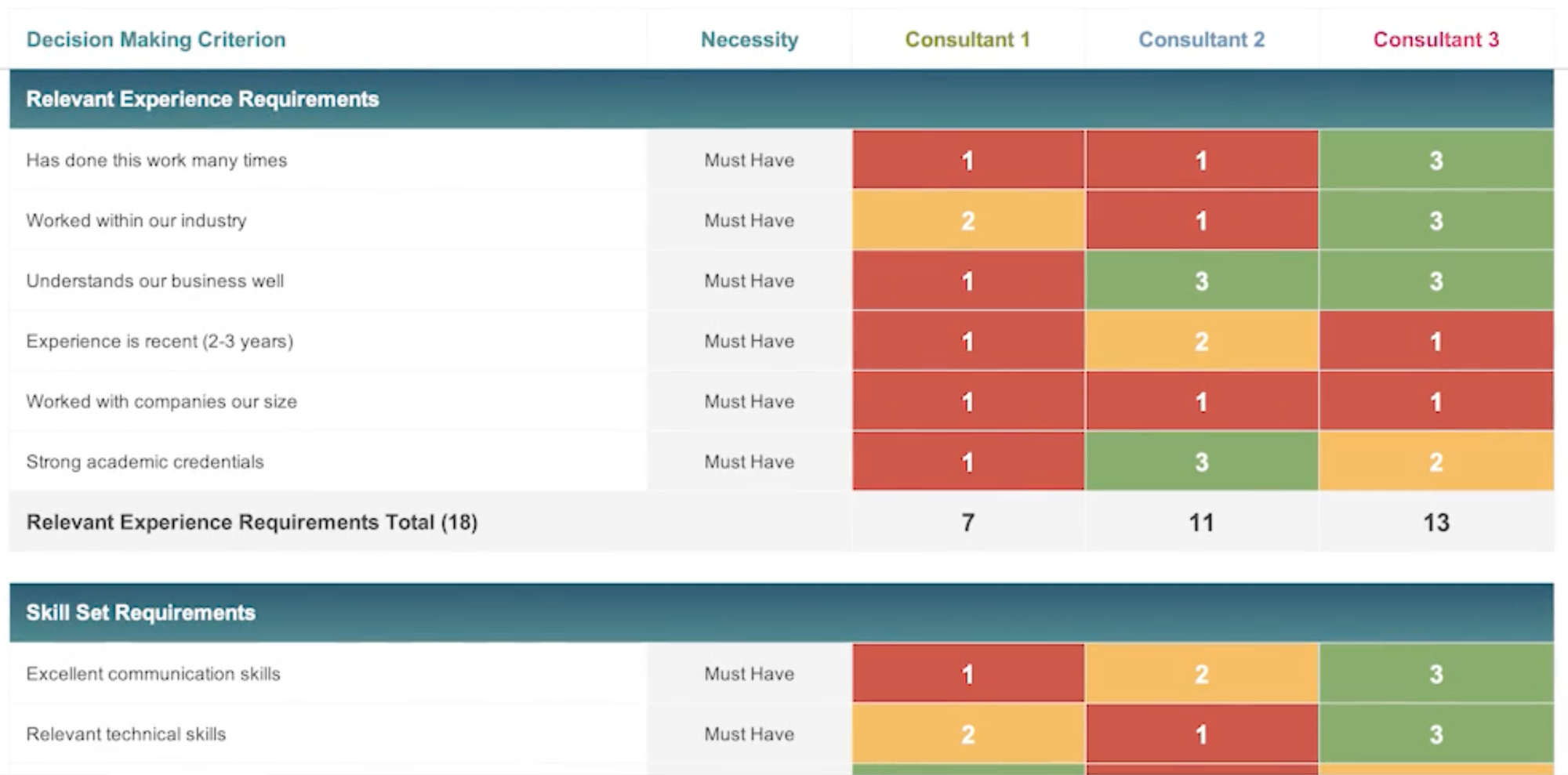
The Consultant Selection Framework
Given these challenges, how should you select a digital transformation consultant? I recommend evaluating potential partners across six dimensions:
1. Implementation Heritage
Do they have a track record of implementing what they recommend? Can they move beyond strategy into execution?
2. Cross-Domain Expertise
Do they bring together business, technology, and human perspectives? Can they translate between these different worlds?
3. Outcome-Based Measurement
Do they measure success in business outcomes, not just digital outputs? Are they willing to tie compensation to these outcomes?
4. Organization Design Experience
Do they understand how organizational structures, processes, and incentives affect technology adoption? Can they help redesign these elements?
5. Adaptable Methodology
Do they adapt their approach to your context, or do they apply a rigid methodology regardless of situation?
6. Knowledge Transfer Focus
Are they committed to building your internal capabilities, or do they create dependency on their services?
I recommend creating a simple scoring rubric for these dimensions, with specific evidence requirements for each. This structured approach can cut through the sales pitch and reveal the true capabilities of potential partners.
The Road Ahead
Digital transformation consulting is itself being transformed. The old model of lengthy strategy engagements followed by separate implementation projects is dying. The new model is more integrated, more outcome-focused, and more adaptable.
For businesses pursuing transformation, this shift offers both opportunities and challenges. The opportunity is to find partners who can truly deliver business impact, not just impressive presentations. The challenge is sorting through increasingly sophisticated marketing claims to find these partners.
For consultants, the message is clear: adapt or become irrelevant. The firms that thrive will be those that break down the artificial boundaries between strategy and implementation, between business and technology, between digital and physical.
At 1985, we're betting that this integrated approach is the future of transformation consulting. We believe the most valuable consultants are those who can operate across traditional boundaries, bringing together diverse perspectives to solve complex business problems.
Digital transformation isn't really about digital. It's about transformation—helping organizations evolve to meet changing customer expectations and competitive threats. The technology is just a means to this end.
The consultants who understand this truth are the ones who will lead the next wave of business evolution.
Recap
Digital transformation consulting isn't what it used to be. The challenges have evolved, and so must the consultants who tackle them. The most effective partners blend strategic insight with implementation pragmatism, technological expertise with organizational wisdom.
As you embark on your own transformation journey, look for consultants who can navigate these complexities. Who can translate between business and technology worlds. Who measure success in business outcomes, not digital outputs. Who understand that transformation is as much about people as it is about technology.
The future belongs to businesses that can adapt quickly to changing conditions. Finding the right transformation partner is a critical step in building this adaptability. Choose wisely.



